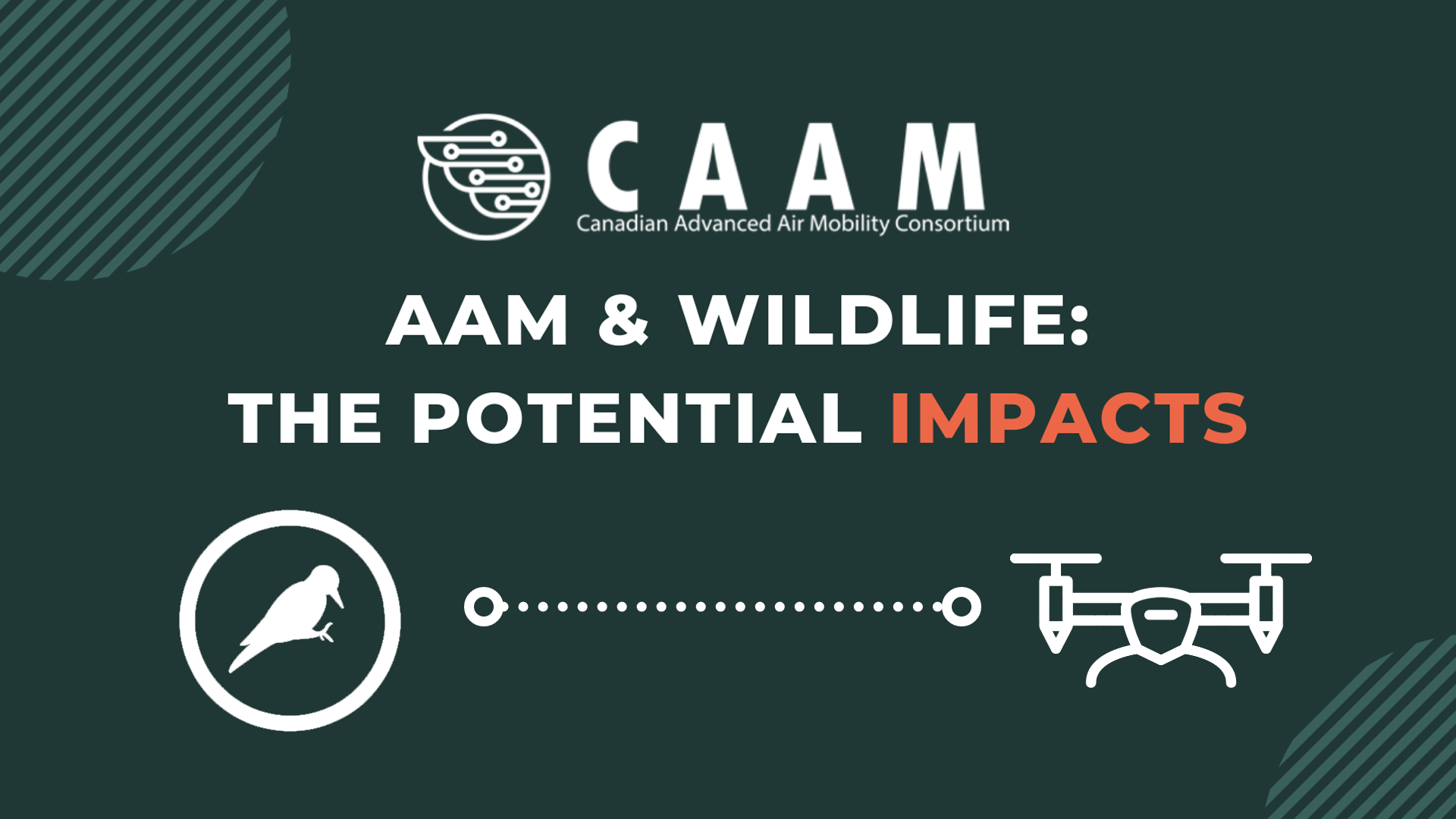 Undoubtedly, one of the biggest questions and concerns regarding Advanced Air Mobility (AAM), specifically Regional Air Mobility (RAM), is the aircraft’s impacts on wildlife. We already have proof that Remotely Piloted Aircraft, better known as drones, impact wildlife. For example, this viral video that many understood as “never give up” probably happened because of the drone’s loud noise.
Undoubtedly, one of the biggest questions and concerns regarding Advanced Air Mobility (AAM), specifically Regional Air Mobility (RAM), is the aircraft’s impacts on wildlife. We already have proof that Remotely Piloted Aircraft, better known as drones, impact wildlife. For example, this viral video that many understood as “never give up” probably happened because of the drone’s loud noise.
And to complicate things even more, the drone’s noise is so loud and new that research conducted in Minnesota found out that even animals used to human noise (farm equipment, roads, traffic, cars) were distressed by the drones—one extreme case made the heart-rate of one bear spike from 39 to 162 beats per minute.
All this evidence may point out that the best to do regarding wildlife is a complete shutdown on AAM and RAM, right? Wrong. But why is that?
AAM and wildlife: They can co-exist
First, it’s important to highlight that RAM has little to do with drones and much to do with VTOLs and STOLs. But why does this matter? Because VTOLs and STOLs tend to be larger than the everyday drone, meaning they work with different technology. And one of the most significant differences regards noise or, being more specific, perceived noise.
Imagine this, you just woke up, and your cellphone volume is on max. If a loud video suddenly plays, your first instinct is to lower the volume. Imagine you just left a concert, your cellphone volume is on max, and you watch the same loud video. The chances are that you need to bring the cellphone closer to your ear to hear the video clearly. The cellphone volume is the same in both situations, but your perception isn’t.
Academia and Industry are projecting AAM aircraft with perceived noise in mind. As Joby Aviation’s acoustics lead Ben Goldman, stated in the 2020 panel, The ((Quiet)) Electric VTOL Revolution,
Independent rotor systems give designers an enormous amount of flexibility to tailor noise […]
Industry is tailoring the noise of their AAM aircraft based on deep research in psychoacoustics—the branch of psychophysics that studies the perception of sound and noise. And since we at the Canadian Advanced Air Mobility Consortium (CAAM) are firm believers in tangibility, “show don’t tell,” here are some examples of how silent AAM aircraft are:
First Joby’s AAM aircraft versus traditional aircraft.
And second, 7-Seater Lilium Jet with the company’s 5th generation technology.
Another important point highlighted by Goldman is that aircraft with fixed-wing for cruise flight are drastically more efficient and less noisy; drones aren’t fixed-wings, but VTOLs can be, and STOLs definitely are.
The second reason why Regional Air Mobility and wildlife can co-exist is that even when using drones, RAM won’t film and follow animals; the aircraft will only travel overhead the animals—and in most cases, will pass far above the treeline. Putting distance between the aircraft and the animals will automatically reduce the noise and the wildlife’s feeling of being followed, drastically reducing the negative impact that AAM may have on nature.
RAM infrastructure
Another point of conflict between RAM and nature is the necessary infrastructure for the aircraft to operate. There’s no way of sugarcoating the truth; like any new development, there will be an impact despite our best efforts. But unlike an airport, vertiports and STOLports can be more easily incorporated into nature, simply because they’re smaller.
Larger traditional aircraft such as the Boeing 777 and Airbus A380 needs a runway of at least 2,500 m. Electra Aero’s STOL needs around 30 m. That’s a huge difference. Since VTOLs take off and land vertically, they don’t need runways at all.
Smaller aircraft also need less space. You can seemingly fit a Chihuahua in a 25 m² apartment, but you can’t say the same about a Newfoundland. The smaller the aircraft, the smaller the infrastructure, and the smaller the infrastructure, the smaller the impact.
RAM will impact wildlife, and that’s undeniable. However, AAM is actively doing everything to mitigate all the impacts. Academia and Industry are analyzing the problems and creating solutions for them. Unlike traditional aviation that worried more about transporting from point A to point B, AAM is looking for ways of doing that without causing more damage to our already fragile nature.
Click here to know more about what AAM is doing to be more environmentally friendly and sustainable.
And click here to learn what CAAM believes to be the right path for AAM.
By Giovani Izidorio Cesconetto



